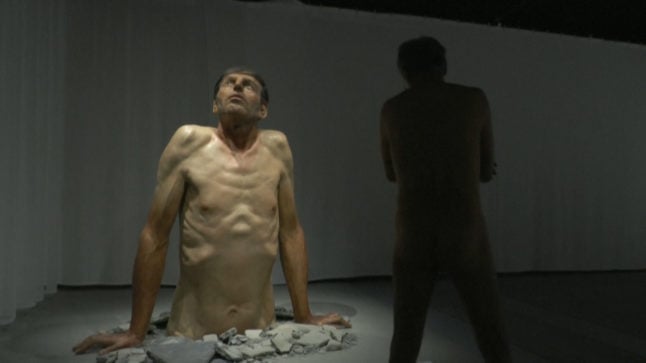La fédération française de naturisme (FFN) is composed of 162 nudist clubs and associations across France and claims to represent some 2.5 million people.
It recently organised a soirée naturiste at a gallery called La Sucrière in Lyon, for a ‘hyperrealism’ exhibition.
Naked visitors toured the gallery to examine 40 naked sculptures that celebrate the human form and question our relationship to our bodies.
“This exhibition resonates well with nudity,” said one bearded male, wearing nothing but spectacles.
One female visitor had only recently taken up naturism.
“At the beginning, it wasn’t embarrassing, but I asked myself how I could do it. But now it is fine. It is freedom,” she said.
France has a long tradition of naturism – which is basically the same as nudism but places a little more emphasis on living in harmony with nature and having respect for the environment.
“Naturism is not just about getting undressed. It is a true life philosophy enacted, among other things, by the practice of nudity,” said Viviane Tiar, President of the FFN.
She recently published an open letter, to all the French presidential candidates, on the federation’s website.
Tiar is calling for a number of measures including: the encouragement of naturism at sporting facilities with designated time slots; the designation of naturist spots in urban settings; better training of law enforcement officers who interact with naturists; and official recognition of her federation.
“French naturists cannot be forgotten about in reforms to come,” she wrote.
France attracts more naked holiday-makers than any other country in the world with more than 2 million visitors every year. The country has hundreds of spots, including camping sites and beaches, where full nudity is authorised.
READ ALSO



 Please whitelist us to continue reading.
Please whitelist us to continue reading.
Member comments